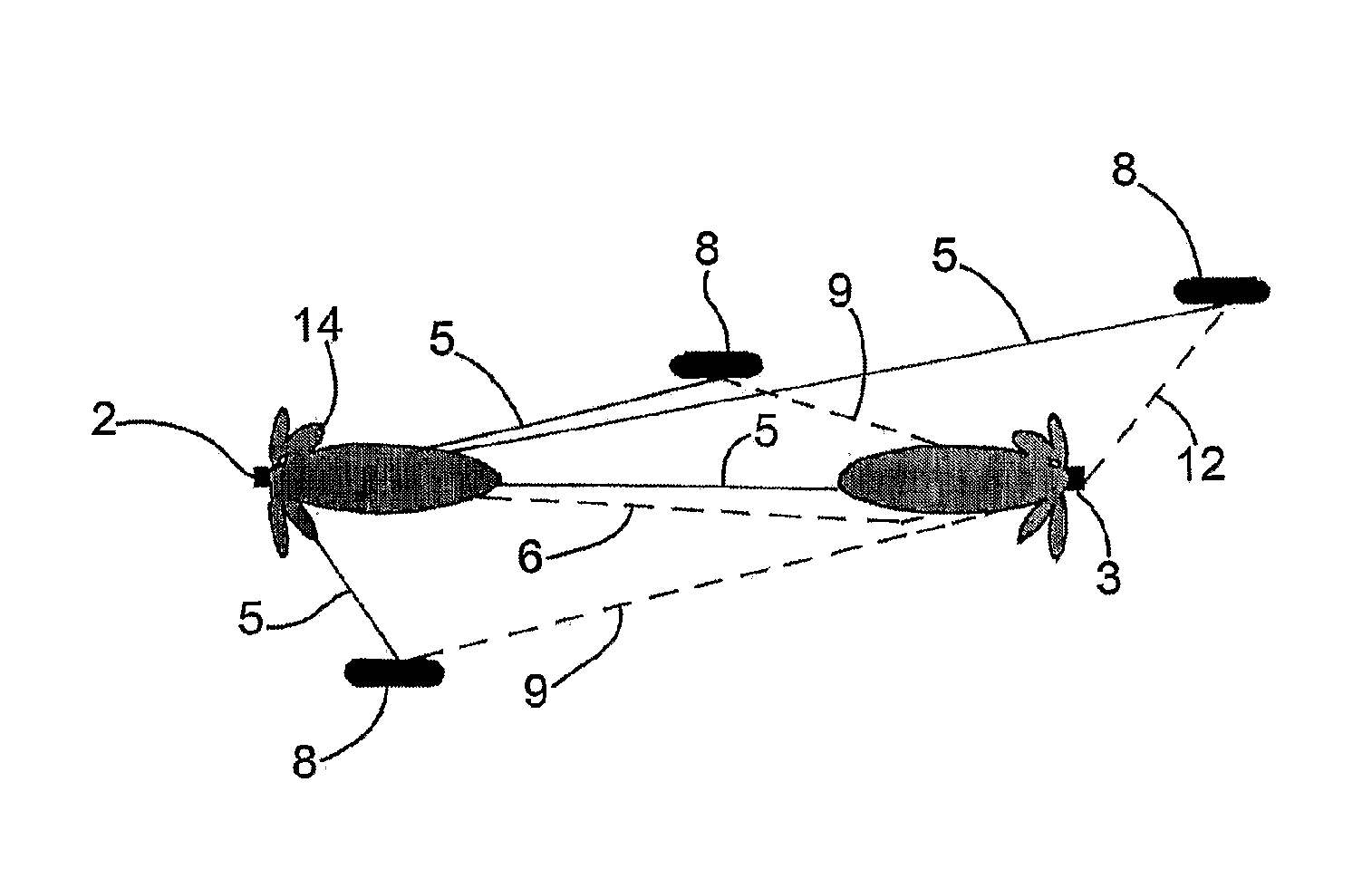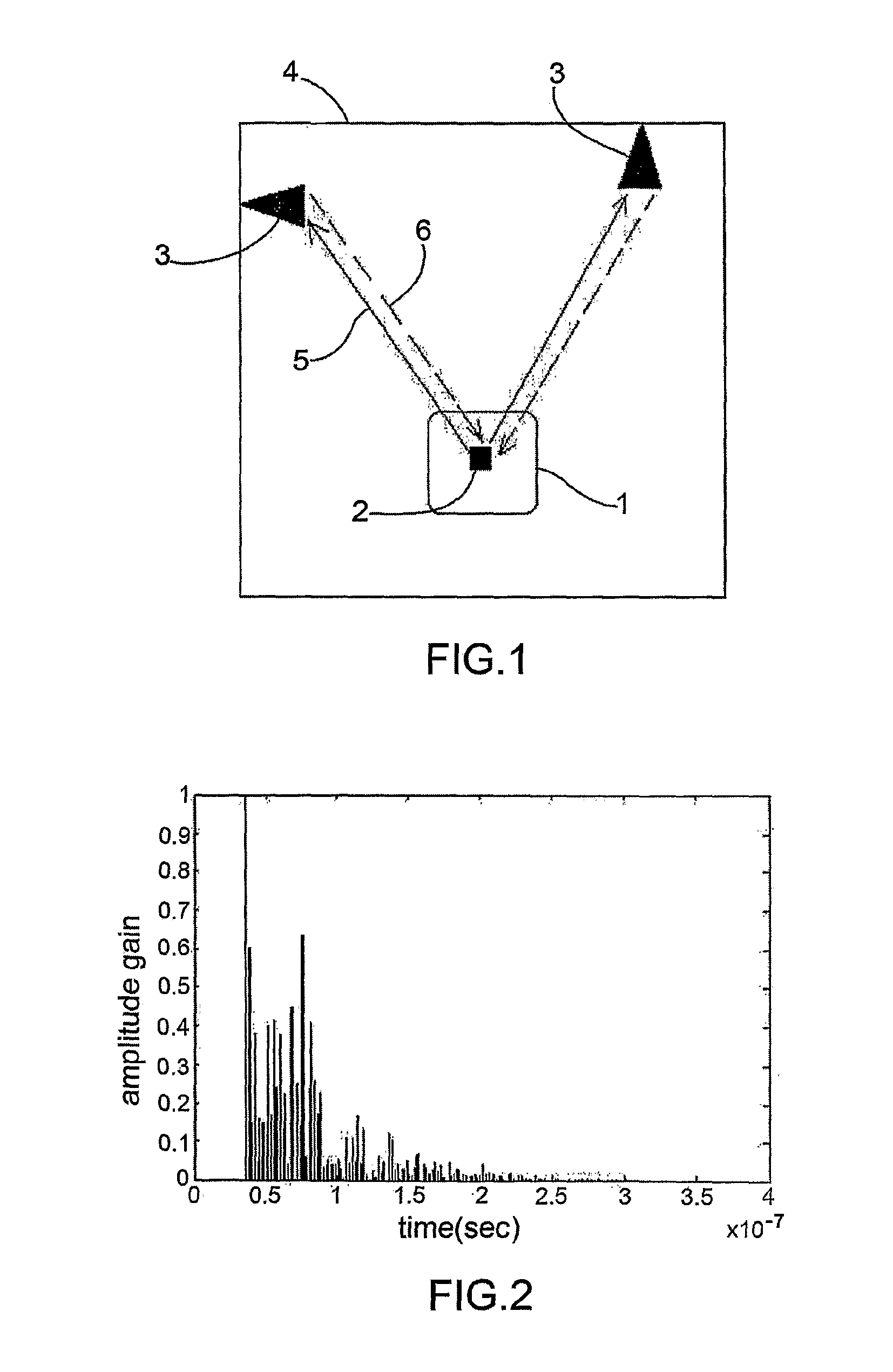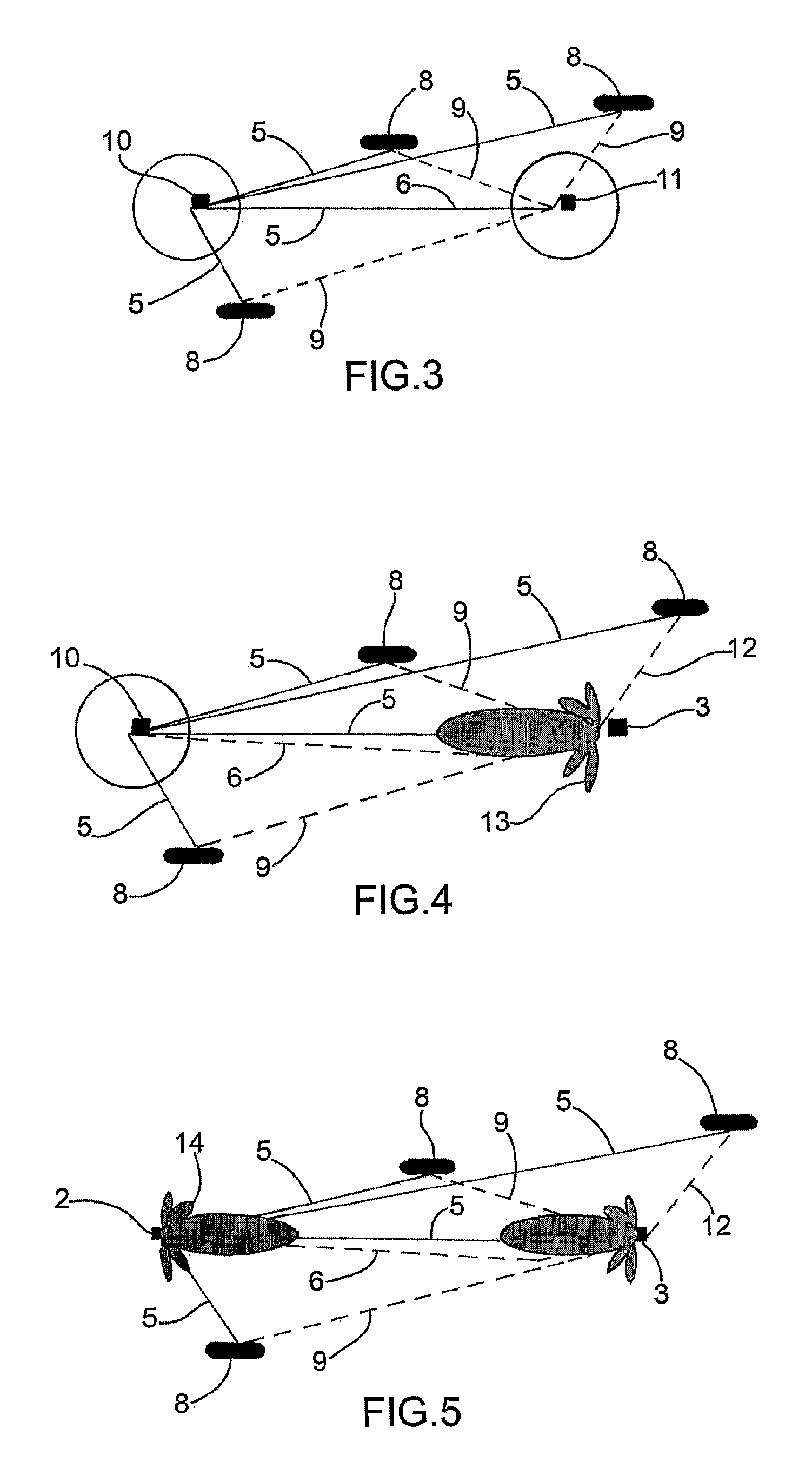Radio frequency positioning system for vehicles
a vehicle and positioning system technology, applied in the direction of direction finders using radio waves, using reradiation, radio wave reradiation/reflection, etc., can solve the problems of limiting the possibility of storing goods, positioning shelves, etc., in the warehouse itself, and even significant localisation errors, etc., to achieve easy installation and high vehicle localisation accuracy
- Summary
- Abstract
- Description
- Claims
- Application Information
AI Technical Summary
Benefits of technology
Problems solved by technology
Method used
Image
Examples
Embodiment Construction
[0059]According to what shown in the annexed figures, the positioning system according to the present invention essentially comprises some reference antennas 3 located in known positions of an area 4, in particular a closed area, for example a warehouse or a store, wherein vehicles 1 to be localised move, in turn provided with a two-way radio directive or omnidirectional antenna 2. As will appear more clearly in the following description, vehicles 1 may be automatic guided vehicles, also called AGV vehicles, or manual guided vehicles, that is, guided by an operator.
[0060]In the case of AGV vehicles, the positioning system according to the present invention provides the necessary information for the vehicle movement to the automatic guide devices.
[0061]In the case of manual guided vehicles, the positioning system according to the present invention provides the operator with the information on the presence of other vehicles in the zone and optionally, for safety reasons, it may also i...
PUM
 Login to View More
Login to View More Abstract
Description
Claims
Application Information
 Login to View More
Login to View More - R&D
- Intellectual Property
- Life Sciences
- Materials
- Tech Scout
- Unparalleled Data Quality
- Higher Quality Content
- 60% Fewer Hallucinations
Browse by: Latest US Patents, China's latest patents, Technical Efficacy Thesaurus, Application Domain, Technology Topic, Popular Technical Reports.
© 2025 PatSnap. All rights reserved.Legal|Privacy policy|Modern Slavery Act Transparency Statement|Sitemap|About US| Contact US: help@patsnap.com



